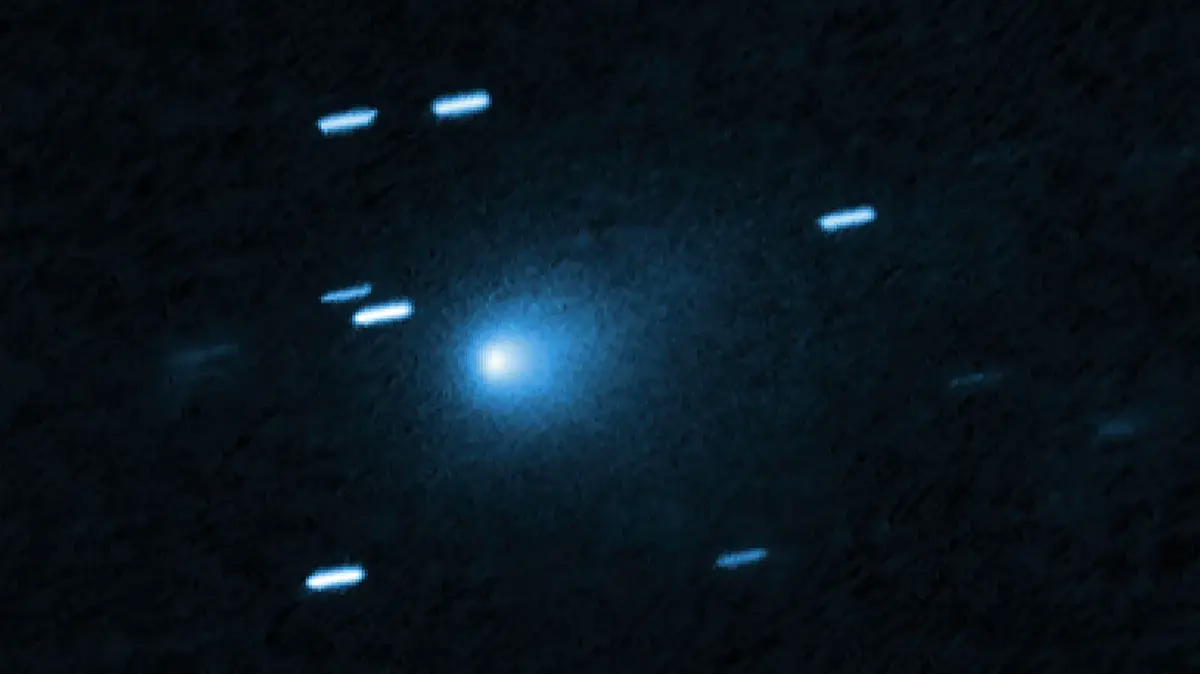NASA’s MAVEN spacecraft detects signs of hydrogen coming from comet 3I/Atlas as scientists study the interstellar visitor closely
-
 Image via nasa.science.gov
Image via nasa.science.govNASA’s MAVEN spacecraft, which usually studies the atmosphere of Mars, recently took on a very different job. For about 10 days starting September 27, 2025, the spacecraft turned its attention toward comet 3I/Atlas. This comet is not from our Solar System, which is why it has become one of the most discussed space objects of the year.
During this period, the comet moved behind the Sun from Earth’s point of view. This meant telescopes on Earth and many space telescopes could not see it clearly. Because of this, scientists used spacecraft already spread across the Solar System to keep an eye on the comet.
One of these spacecraft was MAVEN, which is currently orbiting Mars.
Why scientists needed MAVEN to watch comet 3I/Atlas
Since the comet was blocked by the Sun, scientists needed different tools to continue observing it. Europe’s Trace Gas Orbiter around Mars also captured images and helped researchers calculate the comet’s path. NASA’s solar missions — including STEREO, SOHO, and PUNCH — also tracked the comet as it moved close to the Sun.
MAVEN’s role was especially important because it has a camera that can see ultraviolet light. This type of light helps scientists study the gases coming off a comet.
MAVEN used its UV camera, called IUVS, to take several images of 3I/Atlas. These images showed something important — signs of hydrogen coming from the comet. Detecting hydrogen helps scientists understand what the comet is made of and how it behaves when sunlight heats it.
NASA scientists say these images will help them learn more about 3I/Atlas’s chemical makeup. They also shared that this is only the beginning, and more study is needed to understand the details.
What MAVEN’s new images reveal about the comet
Earlier, NASA’s Swift Observatory found traces of hydroxyl gas around the comet. This gas usually appears when water breaks apart, so it was the first hint that the comet contains water-related materials.
Now, MAVEN’s new ultraviolet images show even more detail. Scientists were able to estimate the ratio of different types of hydrogen in the comet, including a heavier form called deuterium. This information helps researchers understand where the comet may have formed and how old it might be.
When 3I/Atlas passed closest to Mars in early October, MAVEN used its sharper channels to map hydrogen and hydroxyl in the comet’s coma — the glowing cloud around a comet’s nucleus.
One of the released images shows hydrogen glowing around the comet from three different sources: hydrogen from the comet, hydrogen from Mars, and hydrogen that naturally flows through the Solar System. MAVEN was able to separate these signals, helping scientists understand how much hydrogen was truly from the comet.
What this means for the study of interstellar objects
3I/Atlas is only the third known object from outside our Solar System to visit us. Each new bit of information helps scientists understand how other star systems might be different from ours.
NASA researchers say there is still a lot to learn, but MAVEN’s observations are a big step in studying this rare visitor. More images from other telescopes will come in the next few months as the comet moves closer to Earth.
- NASA explains why the new HiRISE image of interstellar comet 3I/Atlas looks fuzzy while amateur astronomers capture clearer views
- Avi Loeb questions NASA’s 3I/Atlas press conference as he says “obvious facts” may be hiding bigger truth
- ISRO captures rare and close-up image of fast-moving interstellar comet 3I/Atlas as scientists continue tracking its path
- NASA shares different views of interstellar comet 3I/Atlas as scientists study the object using various space cameras and observatories